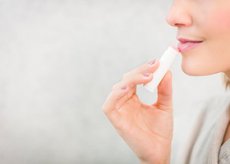Medical expert of the article
New publications
The anatomy of cosmetics, or, what we put on our skin
Last reviewed: 08.07.2025

All iLive content is medically reviewed or fact checked to ensure as much factual accuracy as possible.
We have strict sourcing guidelines and only link to reputable media sites, academic research institutions and, whenever possible, medically peer reviewed studies. Note that the numbers in parentheses ([1], [2], etc.) are clickable links to these studies.
If you feel that any of our content is inaccurate, out-of-date, or otherwise questionable, please select it and press Ctrl + Enter.

The share of biologically active components in cosmetics is several percent (and sometimes even fractions of a percent). Therefore, when opening a jar of cosmetics, we see first of all the base, and it is this that lies on our skin. The fatty components of the base penetrate the stratum corneum, while water-soluble active additives can remain on the surface of the skin, without reaching their target. This alone is a sufficient reason to be interested in what the base of cosmetics consists of and how it interacts with the skin.
Creams can be fatty (ointments) and emulsion. Ointments are prepared by fusing fatty components of varying degrees of hardness. When applied to the skin, ointments are poorly absorbed, leaving a greasy shine and a sticky feeling, so the cosmetic industry has practically abandoned their use. Emulsion creams contain an aqueous and oil phase. In emulsions of the "oil-in-water" type, oil droplets are suspended in an aqueous solution, and in emulsions of the "water-oil" type, on the contrary, water droplets are surrounded by an oil phase. The most common type of emulsion is "oil-in-water", on the basis of which a wide range of cosmetics are created, from nourishing creams to light milk or day cream.
The oil phase of emulsion creams contains fats (saturated and/or unsaturated), hydrophobic emollients (substances that soften the skin), fat-soluble active additives, and the water phase contains preservatives and water-soluble compounds. Emulsifiers are a mandatory component of the emulsion system. In addition, the emulsion may contain thickeners, dyes, UV filters, light-reflecting pigments (mother-of-pearl), and fragrances.
A special group consists of gels that do not contain fats. They are prepared on the basis of special substances (high-molecular polymers), which when mixed with water form a viscous mass or harden, like gelatin when preparing jellied meat.


 [
[